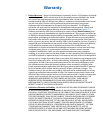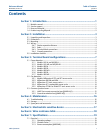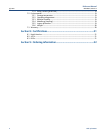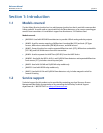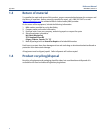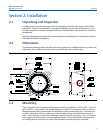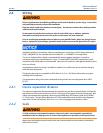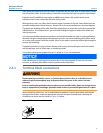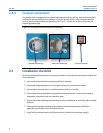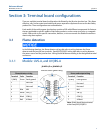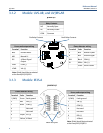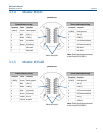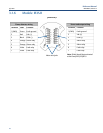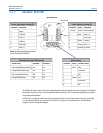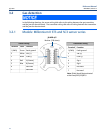
Reference Manual
MAN-0081, Revision 4 July 2014
5
Seals should be located as close to the device as possible and not more than 18 inches (46cm) away;
seal all conduits within 18 inches (46cm). Consult the local electrical code for specific requirements.
Explosion proof installations may require an additional seal where the conduit enters a non-
hazardous area. Ensure conformity with local wiring codes.
When pouring a seal, use a fiber dam to ensure proper formation of the seal. Seals should never be
poured at temperatures below freezing. Always refer to the seal manufacturers recommendations.
The jacket and shielding of the cable should be stripped back to permit the seal to form around the
individual wires. This will prevent air, gas, and water leakage through the inside of the shield and
into the enclosure.
It is recommended that explosion-proof drains and conduit breathers be used. In some applications,
alternate changes in temperature and barometric pressure can cause breathing which allows moist
air to enter and circulate inside the conduit. Joints in the conduit system are seldom tight enough to
prevent this breathing.
Threaded connections on the enclosure between the housing and conduit pipe need to be sealed
with thread tape, such as Teflon tape, or something similar.
The conduit openings are gauged using an L-1 gauge to +½ to 2 turn tolerance.
Field maintenance or servicing on the
junction box is not recommended. If there are any issues,
concerns
, or warranty information required, please contact Net Safety.
2.4.3 Terminal block connections
Do not open
the transmitter, sensor, or junction box enclosure when in a classified area or
when an explosive atmosphere may be present
unless the power to the sensor has been
removed.
Prior to touching the painted enclosure surface or non
-metallic labels, dispel any charge in your
body or equipment by touching a grounded
metal surface to prevent the generation of a spark.
When connecting cable wires, use a small flathead screwdriver to gently press down and hold the
spring connector open. Insert the appropriate wire into the open connector hole, releasing the
screwdriver to secure the wire. Refer to Figure 2-2 below.
Figure 2-2 Terminal connection



